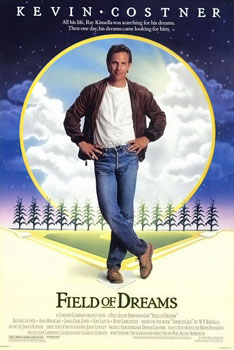 Twenty-five years ago this month the iconic phrase, “If you build it, he will come,” was whispered on the silver screen in the baseball-themed movie, Field of Dreams. Starring Kevin Costner and James Earl Jones, the film had an unintentional, yet profoundly negative, impact on the perception of marketing. For a quarter century, business owners have manipulated the story line in their minds. They twisted those seven little words and repeated in their own heads, “If I build it, they will come.” They decide all they have to do is listen to their inner voice, lay down some bricks and mortar, and customers will flock to buy their widgets, services, tacos, or whatever. They enjoy their specialty and decide that marketing (paid media placements) and PR (unpaid media placements) are not necessary.
Twenty-five years ago this month the iconic phrase, “If you build it, he will come,” was whispered on the silver screen in the baseball-themed movie, Field of Dreams. Starring Kevin Costner and James Earl Jones, the film had an unintentional, yet profoundly negative, impact on the perception of marketing. For a quarter century, business owners have manipulated the story line in their minds. They twisted those seven little words and repeated in their own heads, “If I build it, they will come.” They decide all they have to do is listen to their inner voice, lay down some bricks and mortar, and customers will flock to buy their widgets, services, tacos, or whatever. They enjoy their specialty and decide that marketing (paid media placements) and PR (unpaid media placements) are not necessary.  I'm working with a manufacturing company with a sales team that, before we started working together a year ago, couldn't clearly define its value proposition or tell the company's story. The company was built through the founder's great relationships with contractors, but 30 years after founding his business, the market place changed. Competition was closing in, spreading erroneous information, and the company was losing bids. After 12 months of building the company's communication playbook and executing new strategies, my client is making a comeback. We developed a game plan and strategically hit the target audience right
between the eyes using multiple methods. We've created a fan base, and the founder increased the company's sales goal by 30 percent.
I'm working with a manufacturing company with a sales team that, before we started working together a year ago, couldn't clearly define its value proposition or tell the company's story. The company was built through the founder's great relationships with contractors, but 30 years after founding his business, the market place changed. Competition was closing in, spreading erroneous information, and the company was losing bids. After 12 months of building the company's communication playbook and executing new strategies, my client is making a comeback. We developed a game plan and strategically hit the target audience right
between the eyes using multiple methods. We've created a fan base, and the founder increased the company's sales goal by 30 percent.Field of Dreams has a great storyline filled with drama and mystery, but that memorable catch phrase, forgive the pun, is what box office movies are made of, not big business.







